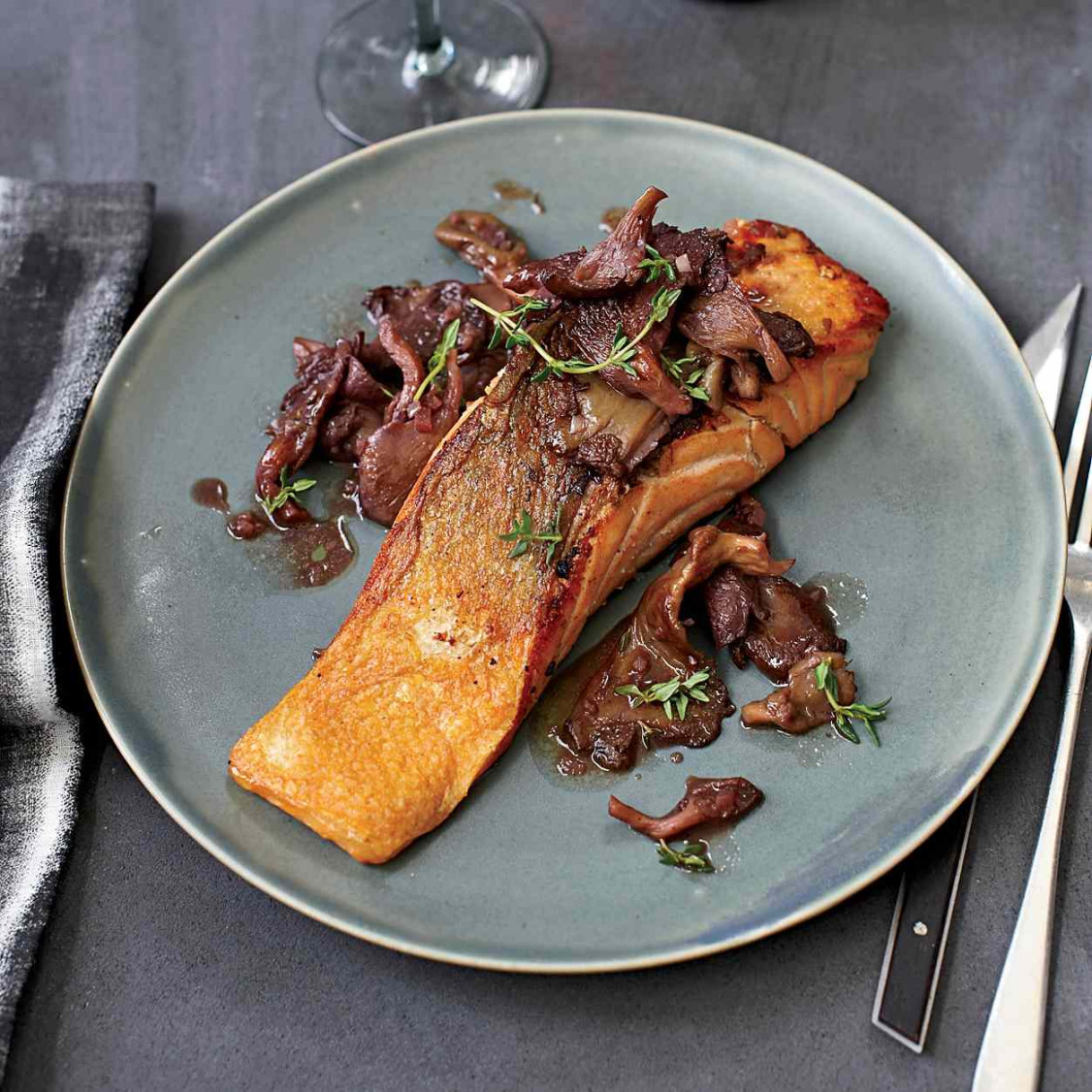Salmon, a versatile and nutrient-rich fish, has long been a staple in culinary traditions worldwide. Its delicate flavor and firm texture make it a perfect canvas for a myriad of culinary creations. When paired with the earthy umami of mushrooms, the result is a symphony of flavors that tantalizes the taste buds.
Ingredients:
2 (6-ounce) skinless salmon fillets

Image Source: foodandwine.com
Preparation Process:
Total Time: 30 minutes
1. Prep the Salmon: Pat the salmon fillets dry with paper towels. Season both sides with salt and pepper.
2. Sauté the Mushrooms: Heat a large skillet over medium-high heat. Add a drizzle of olive oil and the sliced shiitake mushrooms. Sauté until the mushrooms are browned and tender.
3. Create the Sauce: In a small bowl, whisk together soy sauce, rice vinegar, sesame oil, ginger, and red pepper flakes.
4. Combine and Simmer: Pour the sauce over the sautéed mushrooms and stir to coat. Add the vegetable broth and bring to a simmer.
5. Thicken the Sauce: In a separate small bowl, whisk together cornstarch and water to form a slurry. Slowly pour the slurry into the simmering sauce, whisking constantly until the sauce thickens.
6. Cook the Salmon: While the sauce is simmering, heat a separate skillet over medium-high heat. Add a drizzle of olive oil and place the salmon fillets skin-side down. Cook for 3-4 minutes per side, or until the fish flakes easily with a fork.
7. Plate and Garnish: Divide the sautéed mushrooms and sauce among two plates. Top each plate with a salmon fillet. Garnish with green onions and toasted sesame seeds.
Serving Ideas:
Asian-Inspired: Serve with steamed rice, a side of stir-fried bok choy, and a drizzle of ponzu sauce.
A Fusion of Cultures
This recipe is a harmonious blend of Eastern and Western culinary traditions. The use of soy sauce, rice vinegar, sesame oil, and ginger is a nod to Asian cuisine, while the salmon and mushrooms are common ingredients in Western dishes. The result is a dish that is both familiar and exotic, a testament to the global nature of food.
The interplay of flavors and textures in this dish is a reflection of the cultural exchange that has shaped our culinary landscape. It is a reminder that food is more than just sustenance; it is a vehicle for cultural expression and a bridge between different peoples.